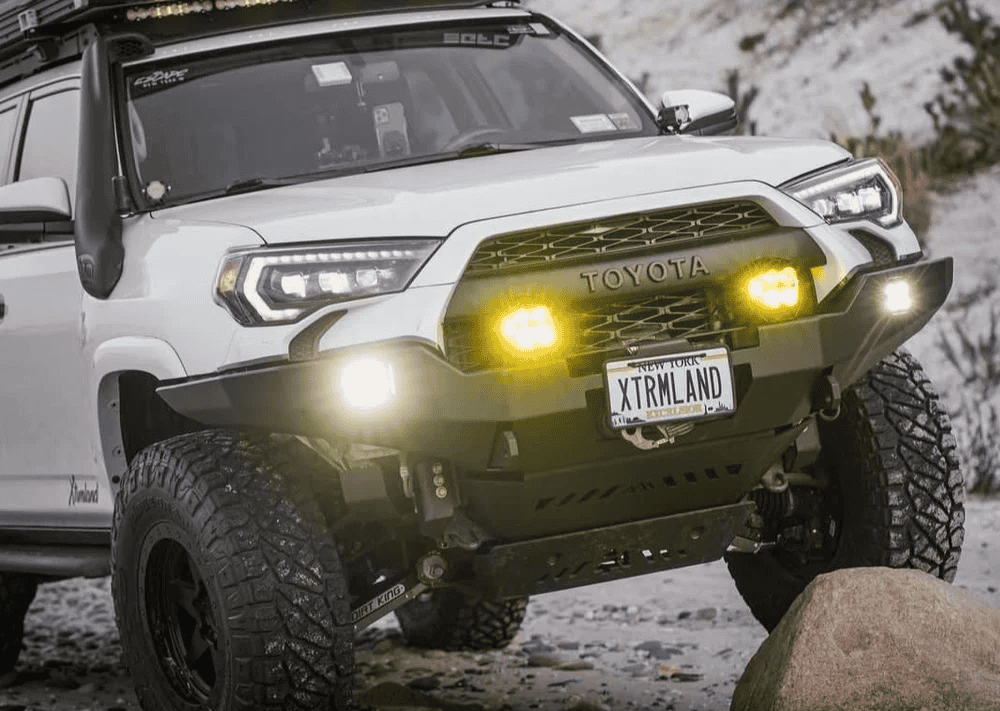Overland Vehicles

The TRD Off Road package gives the Tundra a solid foundation for mixed terrain. You get tuned shocks, underbody protection, terrain modes, and a rear locker on newer models, plus wheels sized for sidewall and brake clearance. It is not a rock crawler out of the box, but it is very capable with smart upgrades.
Think of it as a reliable canvas. The factory geometry keeps road manners predictable while leaving room for larger tires and stronger suspension components. Crawl control and traction logic do their best work when tires match the surface, so tire choice is the first lever to pull. With the right rubber and alignment, the truck feels planted on washboard, grips on loose climbs, and stays quiet on the highway.
Start with tire strategy. Many owners move from factory all season tires to true all terrain patterns in a load range that matches the weight of added gear. A common step is a 33 inch class tire such as 285 by 70 on a 17 inch wheel, which fits with a mild level and proper caster. This size adds clearance and traction without tugging on the driveline in daily use.
If you want more clearance, a 34 to 35 inch class tire is doable with careful planning. This typically requires a measured lift in the two to two and a half inch range, more positive caster, and possibly a body mount reshaping plus fender liner trimming. Wheel offset matters. Aim for a track width that avoids rubbing at full lock and full compression. An offset of twelve millimeters negative to zero on a 17 or 18 inch wheel often keeps scrub radius near stock while clearing control arms and calipers.
Suspension should match tire and payload. A quality front coilover paired with an upper control arm that restores caster will sharpen steering feel and reduce bump steer. For the rear, choose a spring rate that supports your constant load, like a drawer system, bed rack, or canopy, rather than relying only on air assist. Tuned shocks control rebound on corrugations and keep the truck from porpoising in whoops. Avoid stacking spacers. Geometry and travel are more important than headline lift numbers.
Brakes and steering deserve attention as tires grow. Heavier rubber increases rotational mass, so keep rotors and pads fresh, and consider braided lines for pedal feel. An alignment with increased caster and a hint of toe in will calm the truck at speed and reduce wander with larger tires. After any changes, re torque wheels and suspension hardware and recheck alignment after the first long trip.
Protection comes next. A front skid that guards the oil pan and cross member, a transmission skid, and a transfer case skid are high value upgrades that save your day when you tap a ledge or land on a rock. Rock sliders that tie into the frame can hold the weight of the truck during a pivot, and they double as a step in wet conditions. A quality front bumper or hidden mount with rated recovery points allows a safe pull without stressing a tie down loop.
Gearing and driveline health are about more than numbers. With 35 inch tires many drivers feel a softer launch and more hunting on grades. If you tow or travel fully loaded, gearing changes can restore shift logic and reduce heat. A transmission cooler and frequent fluid service extend life when you add weight and larger tires. Keep spare parts like a serpentine belt, fuses, and a dedicated tool roll for simple trailside fixes.
Electrical planning makes your upgrades seamless. A dual battery system or a high output alternator supports lighting, a fridge, and an air compressor without straining the starter battery. Route wiring with abrasion sleeves and proper grommets, and label each circuit for easy diagnostics. Mount a portable or onboard air system where hoses reach all four tires without burning on the exhaust.
Storage and weight distribution affect handling as much as springs. Keep heavy items low and between the axles. A bed drawer with tie downs can carry recovery gear, tools, and spare parts while keeping the center of gravity in check. Roof loads should stay minimal to avoid sway and wind noise. If you add a bed rack and tent, tune rear spring rate to the constant load and scale your tire pressure to the real weight.
Recovery gear is non negotiable. A rated soft shackle, a kinetic rope, traction boards, and a compact shovel solve most stuck situations. Pair them with thoughtful anchoring. Front and rear points must be rated and accessible with gloves. Practice using your kit in a safe area so you know exactly how it fits under the truck and where to place boards on loose climbs.
If you want to see how a full system comes together, browse overland rigs for layout ideas that respect weight, access, and serviceability. For deeper integration like suspension tuning, armor, power systems, and racks, review our custom overland upfit approach. Curious about quality, process, and handoff experience before you commit? Read why choose OZK Customs to understand how we build for real travel.
When it is time to transform your Tundra, OZK Customs focuses on the whole system. We tune suspension to your real payload, fit tires that clear at full compression, add armor where it counts, and integrate lighting and power so everything works without fuss. Our team builds rigs that drive comfortably to work and feel composed far from pavement. Share your trip goals, the weight you carry, and the roads you want to reach. We will craft a plan that protects reliability while delivering the capability you expect.
Ready to dial in your Tundra with suspension, armor, lighting, and integrated power that just works? Share your goals and timeline. OZK Customs will design a precise build plan and deliver a trail proven truck that still feels great on the commute.
ADDRESS:
6159 E Huntsville Rd, Fayetteville, AR 72701
PHONE:
(479) 326-9200
EMAIL:
info@ozkvans.com